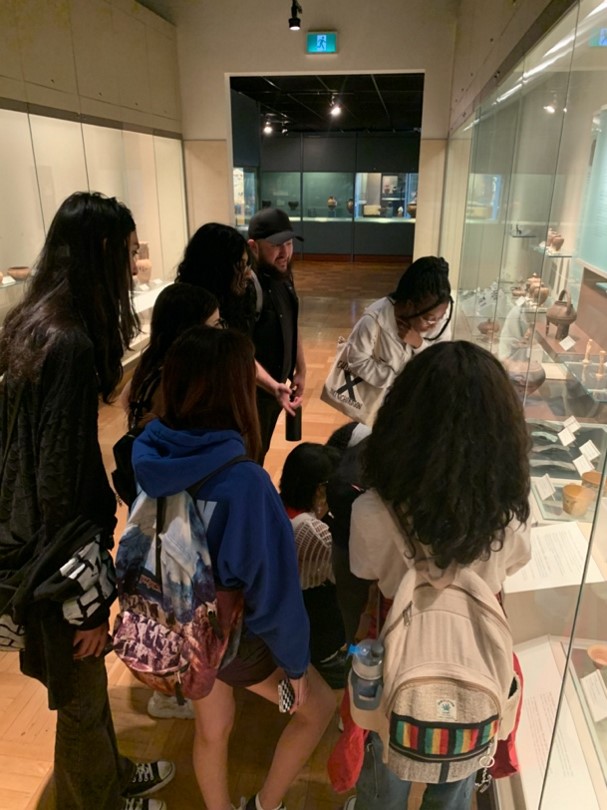Embracing Museums as Experiential Learning: Artifactual Analyses with New Anthropological Perspectives
By Daniel Jankulovski
As children we visit museums and are witness to the excitement of seeing artifacts and world history. We walk through each floor twisting our necks to see what we may have missed as the plethora of artifacts are in each inch of our peripherals. As time goes by, priorities change, and visits to the museum begin to dwindle. Coming from both the classical and anthropological world of education the museum has always been a part of my study as a place of comfort, excitement, and of course, analysis. I wondered: how can we embrace our artifactual analysis and create new anthropological perspectives when teaching an anthropology course? By putting the past into perspective, I decided to reincorporate a field trip we once did as children by visiting the museum.

Regardless of the level of education, I believe that experiential learning is necessary to fully embrace ones discipline. In both the University and College sector I have made it a priority for students to embrace municipal educational institutions such as the Royal Ontario Museum (ROM) and the Guild Inn Estate in Toronto, Ontario, Canada.
Excursions to the Royal Ontario Museum allow myself to educate students in artifact analysis and anthropological approaches to material culture, organization, and ethics. Students are able to leave the conventional classroom and embrace some of the artifactual detail that we have studied. For example, after participating and completing an artifact assignment in class, students are excited to see their artifact in person. Throughout the semester, they have familiarized themselves with the Royal Ontario Museum’s artifactual database and also gained analytical archaeological skills such as understanding the differences between an assumption, an interpretation and a description. It is crucial for us to delve into further experiential learning by embracing one of the places that holds human history through material culture for us to analyze. Students are able to analyze artifacts from past civilizations that they have studied such as the ancient Greeks, Egyptians, and Mesopotamians, as well as natural history. The excursion to the Royal Ontario Museum enhances students’ understandings of cultural preservation and their understandings of artifact categorization and typology. In addition, students view immersive videos such as ROM Immortal which assesses their anthropological lens through material culture and lived experiences. This excursion is beneficial for students as they get to experience artifacts at first hand within the museum, in addition to humanizing certain aspects of past history; for example, one question asked throughout our museum discussion is how should we approach mummies (or the dead in general/exhumation) displayed at the museum ethically and morally? Students are not only excited on their way into the museum, but are also eager to return. As an archaeologist myself, being able to embrace artifacts in the field evokes a different emotion in its entirety; however, being able to visit the Royal Ontario Museum is the closest point of interest that we are able to apply experiential practical learning. This is an eye-opening trip for students as they will be able to leave the museum with new anthropological perspectives.

Another great excursion is the Guild Inn Estate, a municipal art park with salvaged architecture from Toronto. The Estate provides students with an in-depth look at ancient Greek and Roman inspired architecture; fluted columns, stone theatres, and statues are examples of what students are able to analyze and embrace. Students are able to walk around freely in nature with the beautiful, picturesque background of the Scarborough Bluffs near by the Herculean Theatre. The salvaged architecture allows students to understand the historicity not only of the classically inspired world but by the stories of how the architectural pieces were salvaged and shared for all.
I believe that it is important to step outside of the classroom and utilize municipal areas of public education. Observing ancient artifacts provides students with material realities outside of their textbooks. As students leave the museum and my classroom, I can see them come alive with inspiration, community, and a new anthropological lens for understanding humankind.

